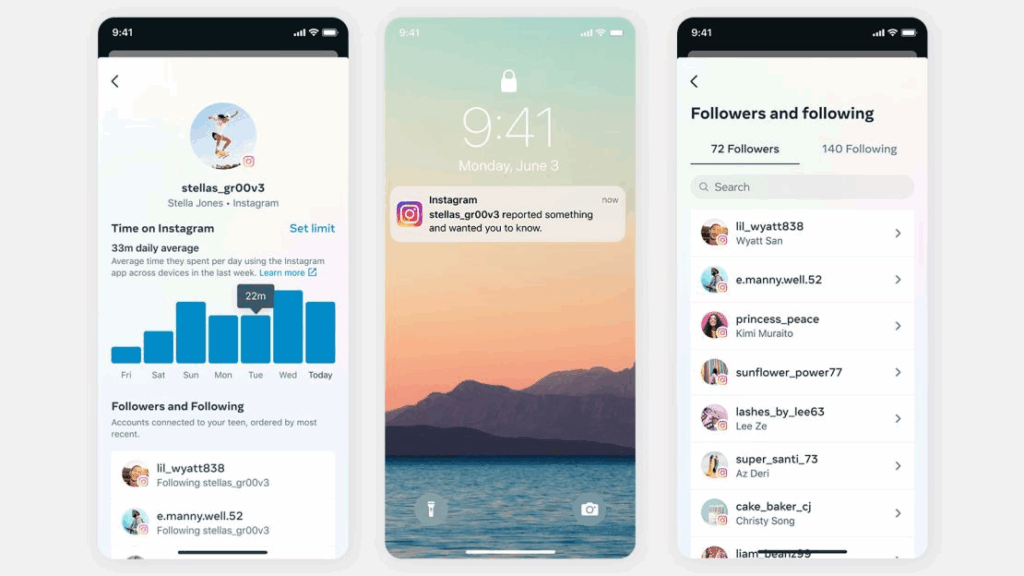A Safer Scroll for Teens as Instagram Gets a Movie-Style Rating
Meta is tightening content control for U18 users on Instagram. The social media platform is now applying PG-13-style content restrictions to its teen accounts. The measure is inspired by the familiar U.S. movie rating standard. The change means U18 users automatically have stricter content filters. The filters block posts with explicit language, risky behaviour, or adult themes.
Meta says this update is its most extensive safety push since it introduced “Teen Accounts” last year. This is amid growing global pressure to address social media’s impact on youth mental health.
What’s Happening & Why This Matters
Instagram Adopts the PG-13 Model
The PG-13 rating means that Instagram will now hide or restrict posts containing strong language, dangerous stunts, or content promoting drug or alcohol use. According to Meta’s blog post, the goal is to make the experience for teens “comparable to what they would encounter in a PG-13 movie — not entirely sanitised, but heavily moderated.”
Meta explained:
“Just like you might see some suggestive content or hear strong language in a PG-13 movie, teens may occasionally encounter similar material on Instagram — but we’re working to keep those moments rare.”
Teen accounts will no longer be able to follow or interact with profiles that share age-inappropriate content. These include those referencing adult material or subscription platforms like OnlyFans. If a teen already follows such accounts, their access and interaction will be automatically cut off.
The system blocks a wider range of search terms, including “alcohol” and “gore.” The blocks hold even if users try to bypass filters with spelling variations.
AI Gets a Rating Too

Meta’s AI chatbot, recently integrated across its apps, will now follow PG-13 standards as well. It must avoid giving age-inappropriate answers or participating in suggestive conversations with young users.
This adjustment follows multiple reports, including one from Reuters and The Wall Street Journal. These reports found that Meta’s AI tools had previously flirted with and roleplayed romantic scenarios with minors. Meta responded by promising tighter age controls and limiting which AI characters young people can access.
Parental Controls Strengthened
Parents now have more authority to shape their teen’s experience. If their accounts are linked, they can enable a “Limited Content” mode. This mode applies an even stricter filter — blocking more material and turning off the ability to see or leave comments.
Teens who want to disable the new restrictions must get parental permission. Previously, users aged 16–17 could opt out freely. Meta also confirmed that it uses AI-based age estimation to identify teens attempting to bypass restrictions.
The rollout starts in the U.S., U.K., Australia, and Canada, with other countries following later this year.

Responding to Global Pressure
Meta’s additions come as governments worldwide act to regulate teen access to social media. Denmark, for instance, plans to ban social media for children under 15, unless parents grant permission for 13–15-year-olds.
At the same time, independent research challenges the effectiveness of existing safeguards. A study by a coalition of online safety advocates reported that nearly 60% of 13–15-year-olds using Instagram’s teen settings still saw unsafe or disturbing content. Meta disputed the findings, saying they ignored the majority of positive user experiences.
Still, the update indicates Meta’s recognition that trust from parents and policymakers is essential to the platform’s survival.
TF Summary: What’s Next
MY FORECAST: Meta’s “PG-13” standard for Instagram represents a pivot toward risk management rather than radical reform. The move helps the company appease regulators and reassure parents. However, it won’t silence debate about social media’s effect on teens.
As AI and content algorithms grow more sophisticated, the next challenge for Meta will be maintaining this balance. They must protect young users without creating a censored or sterile experience. Expect other platforms like TikTok and YouTube to follow Meta’s lead. This could potentially transform the youth social media experience into something closer to parental-approved entertainment than open-ended exploration.
— Text-to-Speech (TTS) provided by gspeech


